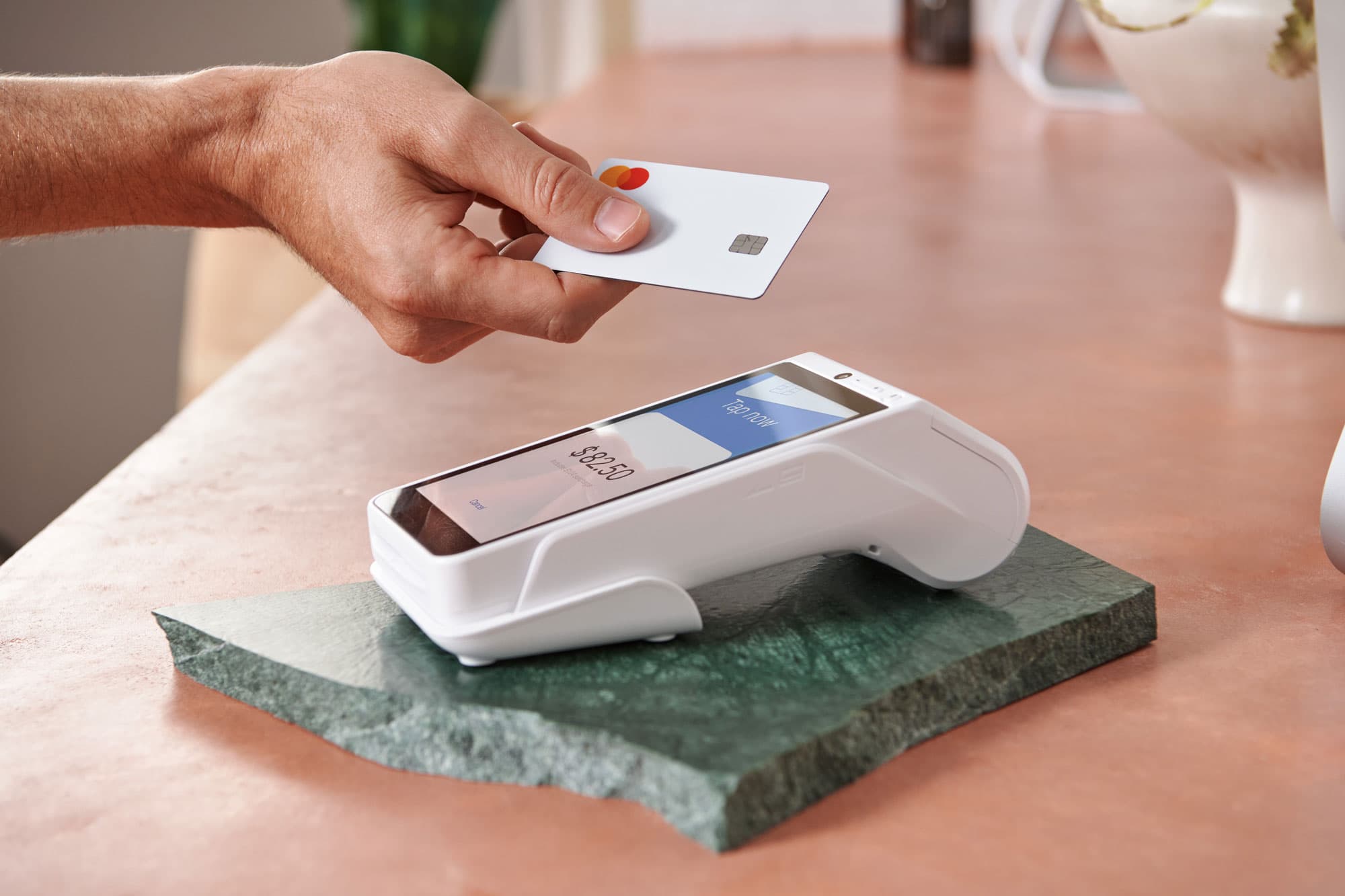
- Business Growth & Optimisation
How to Write a Simple Coffee Shop Business Plan
A strong business plan is the first step in turning your café dreams into a reality.
There’s nothing better in the morning than the aroma of freshly brewed coffee. The first sip of a good blend, and the friendly banter between coffee shop owners and their customers. Coffee brings people together — it’s the morning and mid-afternoon ritual that inspires ideas and conversations. Opening a coffee shop business is a rewarding venture, however to give your coffee shop business the best chance of success you’ll need more than the right blend.
So, what does it take to open a coffee shop? It all starts with a business plan.
Preparing to write your coffee shop’s first business plan
Business plans may be one of the most tedious tasks you’ll need to understand when starting your coffee shop business. However, the steps involved in developing your business plan are key stepping stones to running a profitable coffee shop.
When writing your plan, consider the following:
How much will it cost to open a coffee shop?
What requirements will you need to fulfill in order to open your coffee shop?
Where will your customers come from?
What will your projected profit and loss be for your first three years?
With so many technical business plans out there, it’s easy to get overwhelmed by the specifics. Keep reading to discover a simple and practical way to develop your coffee shop’s first business plan.
The essential parts of your simple business plan
A good business plan sets out your objectives and illustrates what strategies you’re going to use to achieve them. To create a sound business plan, there are a few key areas that you’ll need to focus on.
Executive summary
This is an outline of the fundamentals of your business — think of it as an overview of the business, including its structure, size, location, as well as objectives and financial highlights.
If you’re planning on seeking financial investment or a loan from the bank, your executive summary will likely take some time to get just right. Your executive summary will need to capture a reader’s attention; it’s not unusual for investors to make an initial decision based on the summary alone.
Market Analysis
Your market analysis should include a description of your target market, as well as the segments within that market. This will allow you to dig into the specifics of your consumers’ purchasing patterns and identify any factors that may affect coffee consumption (both positive and negative), as well as any gaps in the industry that you can capitalise on.
Current market analysis shows that the Australian coffee market is comprised of independent coffee shops, which make up 95 percent of the market — meaning larger chains like Starbucks and Gloria Jeans account for just five percent of the market. Its a highly competitive industry, so tailoring your marketing strategy to best position your offering is a fundamental aspect of your coffee shop’s business plan.
Another factor to consider is that the type of coffee your customers will consume differs, depending on your specific market and location — and, over time, tastes change as new trends emerge. (Think of the unicorn latte art of late, or the coffee/doughnut hybrid trend.) As Bill and Chris Spathis, owners of Melbourne’s Decoy Café stated: “Back in the 70s, people ordered their coffee so hot it was sacrilegious — but that’s the way most people liked it. There was also far less diversity. At one stage, most people were buying coffee from the supermarket. People are more discerning now. Most are buying their coffees from local roasters.”

Ensuring your market analysis is up-to-date will help your coffee shop tap into current trends and stay on top of the coffee business.
Competitive Analysis
This section should hone in on your locality and highlight all current competitors, as well as any potential future competitors that might enter the market. If you determine your competitor’s strengths and weaknesses, you will be able to discover opportunities that are present and give your coffee shop an advantage.
Product line
If you plan on selling specialty coffee, this should be outlined in your business plan — including information about where the coffee beans are sourced, which vendors or partners you will be using for materials, and what your menu will look like. Do you want your business to become known for its affogatos? Or range of milks (and milk alternatives)?
The products you choose to sell will have a big impact on your profit margins, so choose wisely.
Marketing Strategy
Now that you’ve done your analysis and know the intricacies of your local market’s coffee scene, it’s time to put the data and insights you have discovered to work and develop your marketing strategy. The strategy you develop will be used for promoting your coffee shop, products, and your business.
Consider which social media platforms will be best suited to the promotion of your coffee shop and how you will promote your business to foot traffic, as well as which sales data you’ll be tracking and reviewing to determine how well your business is performing.
One of the most important metrics to keep a close eye on will be your total sales transactions. It’s imperative that you have visibility over not only your daily sales, but also your expenses. A tool such as Zeller Dashboard will show you a real-time comparison of the day’s sales versus sales made on the same day last week, as well as month-on-month comparisons. Having this information handy will prove invaluable when you are revenue forecasting, and developing marketing strategies to meet sales targets.
Management plan
Creating and sticking to a management plan is a necessary part of growing your coffee shop business. It should include the tools and systems you are going to use to manage your employees, the layout of your team and their responsibilities, as well as staffing costs — including wages, training, and items such as uniforms.
Financial considerations
Business finances are complex. Outlining your anticipated costs and how you plan to finance your coffee shop will help you in determining the profits you could hope to achieve through your coffee shop.
Once you have outlined your costs, you can calculate what your projected cash flow will be and work out your business’s break-even point. By calculating your business’s break-even point, you’ll be in a better position to understand the timing between getting paid and paying the business’s bills — helping to keep your business in the black.
When considering your finances, it is also important to look ahead and include the business’s projected profit and loss for a three-year period. This will indicate your business’s net profitability as it establishes itself in the market.
Your legal obligations
There are a few things to consider here. Depending on the type of coffee business you plan on opening — whether it be a coffee cart or shop front — there will be legal obligations you need to meet. It’s essential that you are clear on these legal obligations from the beginning, otherwise you will hinder your business’s opening and put yourself at risk of financial penalty.
You’ll need to ensure you obtain the correct industry-specific licences and permits for your coffee shop. Consult a legal expert on these matters, as each licence and the steps towards compliance is specific to your location and business. For instance, a specific licence may be required for the preparation and handling of food and beverages. There are also licences that certify compliance with the appropriate health and safety guidelines, and your business could also have to pass health and safety inspections before it is allowed to open.
You’ll also need to ensure your coffee shop has the proper insurance coverage, in case of any unforeseen accidents. There are various types of insurance that you should consider, such as:
General insurance
Health insurance
Public Liability insurance
Kitchen insurance
Workers’ compensation
Start-up costs
The cost of opening a coffee shop can be a major hurdle. However, if you work out what costs are associated with establishing the business — that is, what is a necessary cost and what is not — it is an achievable venture. There are five cost factors to take into consideration when planning your business.
1. Physical space
The location of your coffee shop will be crucial to its success. As a new business, you want to find a location that has a decent amount of foot traffic and visibility from the street — otherwise, you’ll need to invest significantly more money in advertising and signage to attract customers. Consider whether your coffee shop will be a coffee kiosk, a coffee truck, a coffee shop with standing room only, or a sit-down coffee shop.
When considering the location of your coffee shop, keep social distancing in mind. Once the current measures have been eased, many people will still be weary and likely won’t want to be constricted in tight spaces. Businesses with an outdoor area will be able to swell with demand.
2. Equipment
The equipment you choose to purchase will impact the quality of the coffee you’ll be serving, and the overall experience of your customers. Research the type of equipment that will suit your business’s purposes and determine what you must absolutely have, and what is unnecessary and can wait to be purchased later.

3. Your Menu
Your menu is another major cost to consider. Will you be offering a selection of gourmet coffee, and will you include sweet and savoury treats? The larger your menu selection is, the more you’ll need to invest in materials and produce. You’ll also need to ensure that you have stock on hand to meet demand, otherwise it could impact your customer service if you are underprepared.
Your market analysis research will come in handy in determining which items to add to your menu, as well as ensuring you are up-to-date with market trends and providing your customers what they want.
4. Staffing
Staffing costs need to be worked out from the get-go, and should form part of your business plan. Consider the technology needed to assist with employee management and payroll, training costs, penalty and overtime rates, as well as any benefits and superannuation contributions.
You’ll want to ensure you hire trained baristas, who know how to pour the perfect cup.
5. Marketing
How will you get the word out about your newly-opened coffee shop? As with any new business, there will be marketing costs associated with opening up; flyers, social media ads, and signage are all worth considering.
What out-of-the-box ideas do you have for attracting new customers? Will you be offering a discount to people who check in and share your social media post on their own feed, for example? This will cost money, as it eats into your projected profits, so you’ll need to factor in a limit. Will it be for the first 50 customers, or for the first day only?
Whatever marketing you decide to go with, you’ll need to budget it into your costs. Adopting a ‘test and learn’ approach will help you measure the impact different types of marketing has on your sales and investment, and understand what works (and what doesn’t) with your local customers.
How will you take payments at your coffee shop?
People are generally in a hurry when getting their morning and afternoon caffeine fix, and don’t like waiting too long. Your coffee shop needs to offer fast and efficient service and be able to deal with the busy periods as efficiently as possible.
Taking payments quickly and managing customer flow is crucial to the overall customer experience. Long lines due to a slow payment system can impact customers’ perception and lead to a loss of business if people are inconvenienced with the payment process.
What your business needs is to ensure fast and convenient service with A payment terminal such as Zeller Terminal, which offers tap and go payments, ensures fast and convenient service. Your customers can tap their watch or smartphone to the terminal, with no need to pull out their wallet. Zeller Terminal is also fully mobile, and can be taken anywhere — making it handy for all types of coffee shop businesses.
Ready to get started with Zeller?
Sign up nowEnsuring your coffee shop is a financial success
Opening a coffee shop can be a profitable venture, with the right planning and equipment. Walk past any busy coffee shop, and you’ll see it buzzing with customers enjoying their coffee, sipping on tea, and nibbling on pastries and other treats.
The success of your business will be dependent on how closely you watch over your operations, track profits and keep on top of businesses expenses. The average coffee shop’s profit margin is around five to eight percent, similar to casual food establishments. This means that it’s likely you’ll only keep five to eight cents of every dollar you make once, you’ve factored in all your business expenses.
It’s important to note that most coffee shop businesses that fail do so due to financial issues caused by a lack of planning — not bad coffee. Choosing the right payments provider is one of the most crucial decisions you’ll make. Zeller Terminal accepts every tapped, dipped, or swiped payment for just 1.4% — which can easily be passed to the customer, with the flick of a switch. By minimising your transaction costs, you’ll ensure more money stays in your business.



